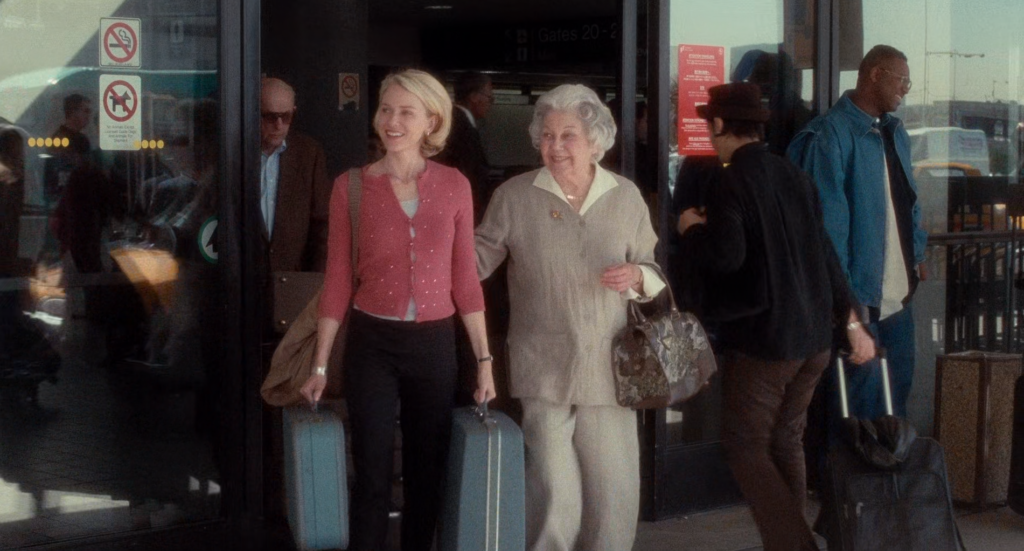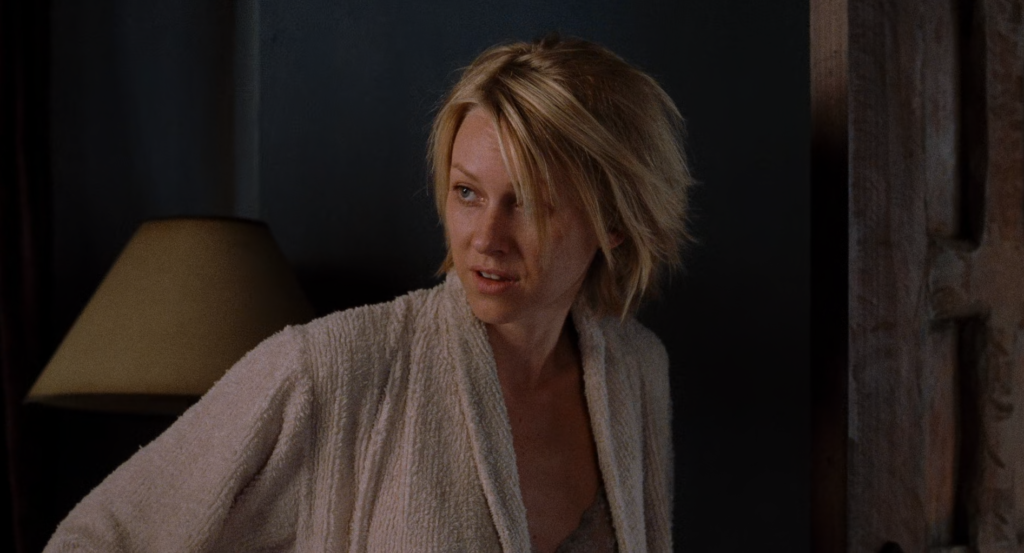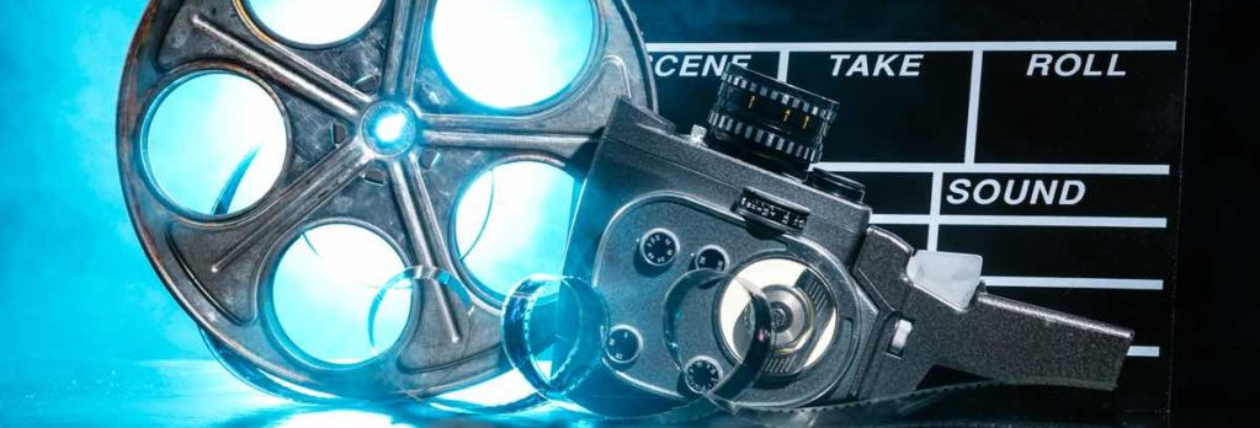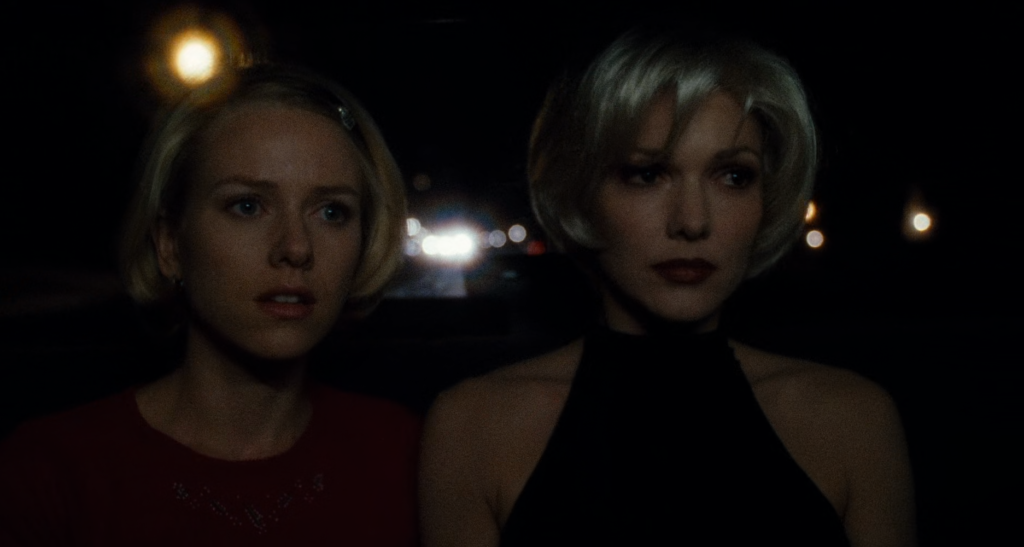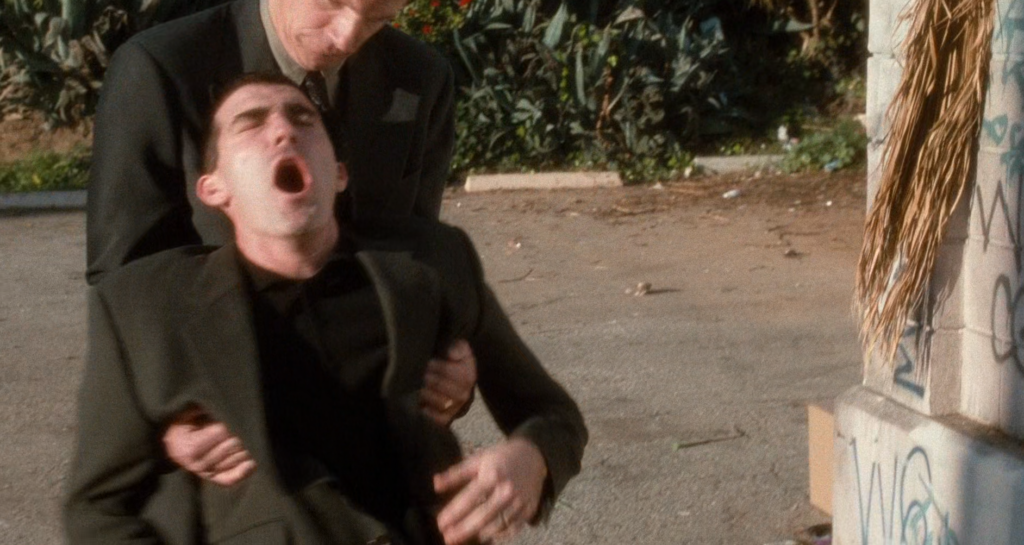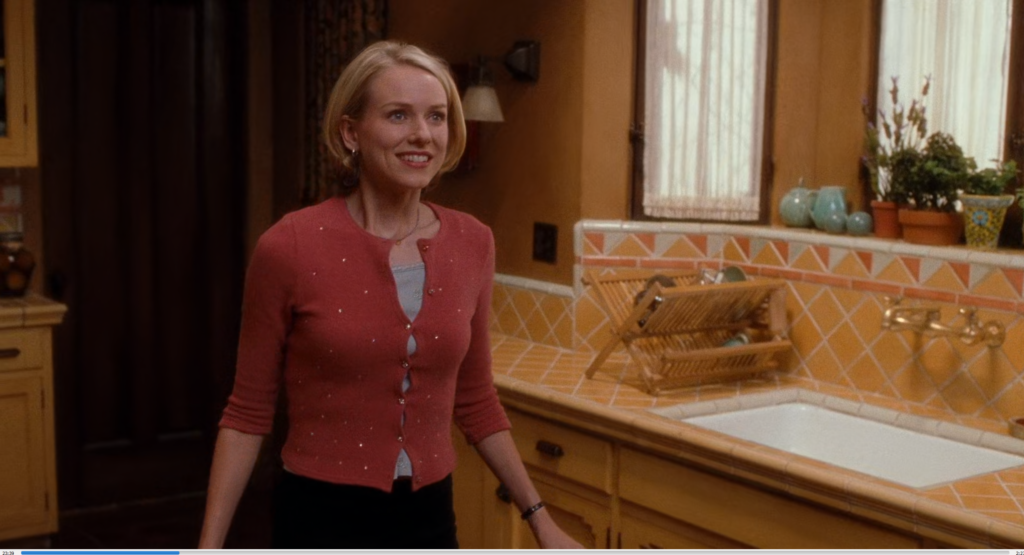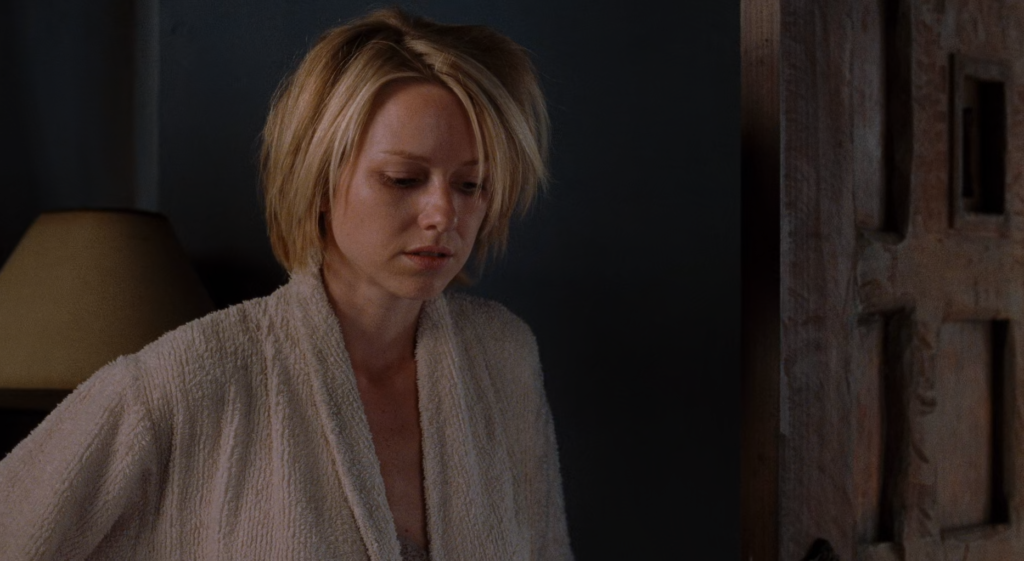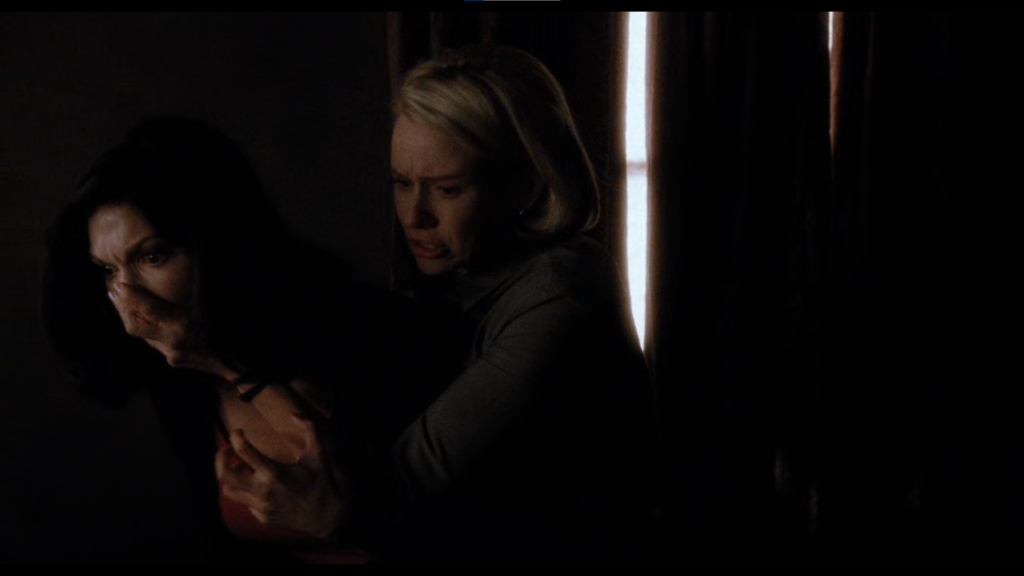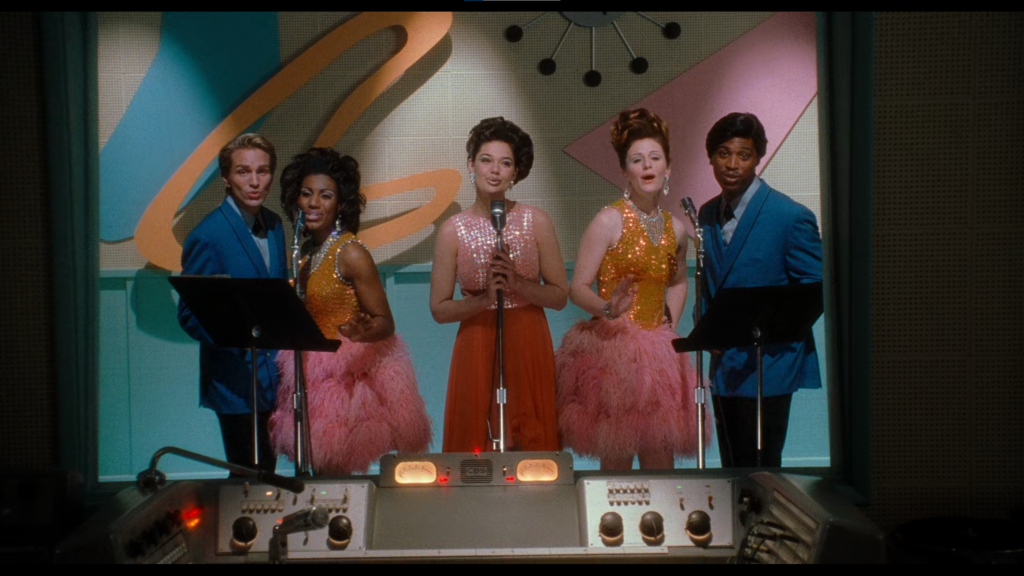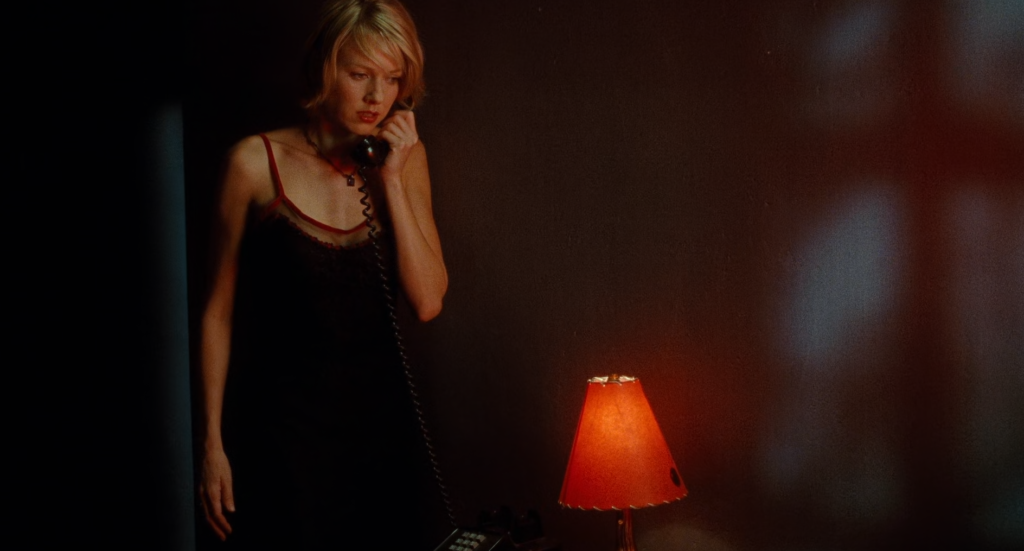Lynch as Auteur
Lynchian – Characteristic, reminiscent, or imitative of the films or television work of David Lynch. Lynch is noted for juxtaposing surreal or sinister elements with mundane, everyday environments, and for using compelling visual images to emphasize a dreamlike quality of mystery or menace.
Uncanniness – the fact of being strange or mysterious, often in a way that is slightly frightening, the producer’s body proportions is warped in this scene, making the spectator feel uneasy and fearful of him, allegorically commenting on the fearful and unfair nature of the industry.

Use of doppelgangers – Lynch does this to elicit confusion and a connection between two characters, in this scene the gap between Betty and Diane is closing and they are merging into one, foreshadowing to how their identities are about to be complicated and switched.

Ominous sound design – leading up to this scene, we can hear a gradually louder and more intense humming/ rumbling score, eluding to a build in tension following Betty finding out Diana isn’t her Aunts friend.

Heightened performance – The heightened performance in this scene elicits to how Betty is an extremely optimistic and whimsical person in the beginning, contrasting violently to her switch into madness. Lynch plays into the star struck actor in LA trope to amplify Betty’s innocence and naivety in the exposition. The grandparents in this scene also have a heightened performance, signposting them as a vital character in the film to be brought back later.

Themes of tarnished idealism – Lynch uses the concept of tarnished idealism to show the deuteriation of Betty/Diane at the hands of the detrimental and sexist industry. In the beginning, Betty presents as a very innocent and optimistic person, full of hope and wonder. But after the switch, following what she has endured at the hands of the patriarchal industry, she now is reidentified as Diane, a tarnished and broken individual who appears more worn-out and experienced.
